Latin name: Aconitum
Category: Ranunculaceae perennial herbaceous plants
Origin: Europe, Asia, North America
Aconite is a majestic flowering perennial
Aconite flower is used to decorate landscape design. The plant is grown in a single planting and in a group planting, and is also used to decorate mixborders. Varieties of climbing aconite are grown for vertical gardening, thus giving a beautiful elegant look to gazebos and verandas. Wrestler flowers are also used to create beautiful bouquets.
The plant is used for garden design. With the help of a plant, it is possible to cover or revive an unattractive structure.
Aconite is a herbaceous plant with a small bushy cluster. A thin stem with an inflorescence grows from one to one and a half meters. There are also creepers belonging to the genus in length up to five meters of the stem.
The aconite plant is unpretentious with inflorescences resembling knightly helmets. Under natural conditions, it grows in humid areas, where the land is fertile. The wrestler is grown both in flower beds and in personal plots. However, it should be borne in mind that the wrestler is poisonous, like such plants belonging to the buttercup family: caustic buttercup, field larkspur, hellebore, anemone, delphinium.
The flowers of the plant are very attractive, but their toxicity should be remembered. The flowers of the plant are highly decorative and serve as an ornament, but using them requires caution, because you can get drunk.
A well-known fact - the wrestler consists of not only poisonous species. So those species that grow in the southern area are very poisonous. Dangerous poison is found in pollen, juice, vegetative parts of the plant, as well as in extracts of the root system. But aconite flowers growing in northern areas are safe for pets.
This pattern is explained by the fact that with a short vegetative period, the formation of toxic alkaloids does not occur. It is also possible to eliminate the poisonous qualities of a charming flower for some time and on fertile soil in a southern area.
The wrestler is considered a relative of such plants as larkspur and spur, but the flowers differ from others in the buttercup family, as they contain a resemblance to the legume lupine. The flowers are blue, cream, yellow, purple, white with a pyramidal head or a large raceme about 150 cm long.
The aconite flower forms a rhizome or root-tuber root system that penetrates the ground from 5 to 30 cm. The wrestler grows with straight shoots, the height of which is one and a half meters, curly species contain shoots from 4 meters or more. Green foliage grows lobed or dissected, placed in the next way. The fruits of the plant have leaflets that contain small seeds and are endowed with germination for a year and a half. Insects rarely collect nectar from a wrestler, so the plant is poisonous and dangerous.
The wrestler has anti-inflammatory, antitumor, antimicrobial, analgesic, antispasmodic, narcotic effects.
Garden aconite is used to treat any colds. The plant is part of drugs that reduce blood pressure, restore hormone levels, antitussives. The wrestler contains flavonoids, with the help of which the plant is used to treat malignant tumors. They help to curb the growth of neoplasms, remove inflammatory processes and serve as protection for the body when radiation therapy is used.
Due to the content of tannins, the aconite plant is used as a bactericidal agent. The leaves contain juice that can stop bleeding and heal wounds. The wrestler plant is also used to treat the cardiovascular system and peptic ulcers, and acts as a diuretic.
Medicines with aconite are analgesic and anti-inflammatory drugs, they are used in the treatment of joints, osteochondrosis, arthrosis, arthritis, sciatica.
The root of the plant is used in traditional medicine to treat the digestive tract, rheumatism, fever and colds. Chinese medicine - for paralysis, syphilis, polyarthritis, migraines.
The plant must be used with great care. Medicines with aconite should be taken only on the recommendation of a doctor and under his supervision.
Some of the most popular wild and meadow flowers: Geranium, aquilegia, aconite, valerian officinalis, cornflower, oregano, St. John's wort, crocus, bluebell, bathing suit, lily of the valley.
There are charming spring wildflowers that are great for gardens: chamomile, poppy, apiary, holly, thyme, dandelion, white rose, wild g ladiolus, iris, nazarene.
Summer wildflowers that bloom: marigolds, fragrant tobacco, verbena, nasturtium, purslane, morning glory, hydrangea, campsis.
Types of aconite
The aconite family includes many varieties. The most popular and unique:
Aconite noveboracense
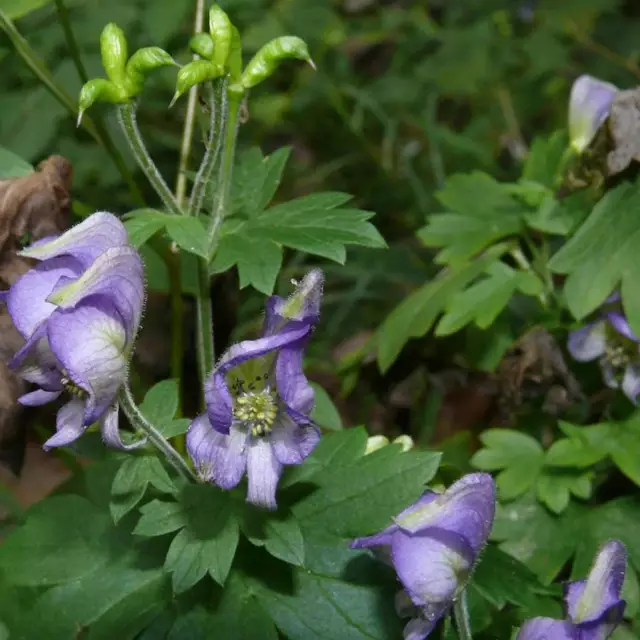 This species is listed in the Red Book. The plant is not like other species, in appearance it is very similar to legumes, for example, it is very similar to Lupine. The plants grow with purple and blue flowers.
This species is listed in the Red Book. The plant is not like other species, in appearance it is very similar to legumes, for example, it is very similar to Lupine. The plants grow with purple and blue flowers.
In Europe, wild species are found:
Aconite oak (Aconite nemorosum)
The plant grows on chernozem soils, surrounded by shrubs, on the slopes of the steppes, on the edges of a deciduous forest. The presence of pale yellow flowers is a distinctive feature of this species.
Northern aconite (Aconite septentrionale)
The plant grows in the north of the European territory between shrubs, and is also found in forests. The flowers are occasionally white, and the main part of the plants with purple flowers. The wrestler grows two meters high. A very popular variety is Ivorine, which has white flowers. This species is one of the earliest flowering, in which flowering begins at the end of June.
Aconite woolly (Aconite lasiostomum)
This species grows in the vicinity of forests and clearings. The plant grows with yellow or pale yellow flowers.
Flerov's aconite (Aconite flerovii)
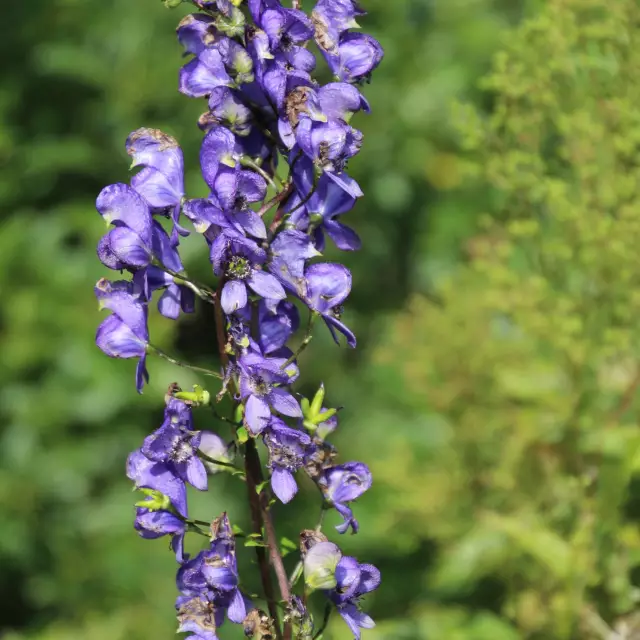 This plant species is contained in the Red Book of Russia. It can be found exclusively on the territory of the Vladimir region near the Sherna River. Aconite contains purple flowers.
This plant species is contained in the Red Book of Russia. It can be found exclusively on the territory of the Vladimir region near the Sherna River. Aconite contains purple flowers.
Aconite Bicolor (Aconite Bicolor)
Forms lush bushes, large white-blue flowers. This species is native to Bavaria. Plant height about 120 cm. Flowering period June-August.
Popular and unpretentious according to growing conditions are the following species:
Aconite napellus (Aconite napellus)
The birthplace of the plant is Eurasia. Widely grown in home gardens. The height of the plant is about two meters, it has dark purple flowers, occasionally almost black ones are found. The strong stems of the wrestler do not need a garter. With the flowering of the central part of the stem, the flowering of the lateral ones begins, due to which the flowering time lasts about a month.
There are also rare, but spectacular species:
Wolf aconite (Aconite lycoctonum)
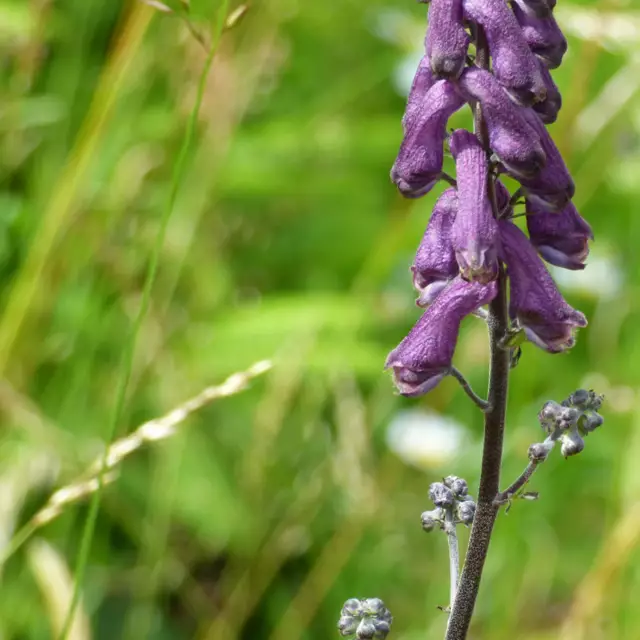 This species is native to Europe. Places of plant growth are dampish tall-grass spruce-deciduous forests, banks of rivers and streams. The stems reach a height of 60 cm - 2 m. Aconite contains flowers of a sulfur-yellow hue, helmets are about twice as high as the width of the flower.
This species is native to Europe. Places of plant growth are dampish tall-grass spruce-deciduous forests, banks of rivers and streams. The stems reach a height of 60 cm - 2 m. Aconite contains flowers of a sulfur-yellow hue, helmets are about twice as high as the width of the flower.
Aconite antorra (Aconite anthorra)
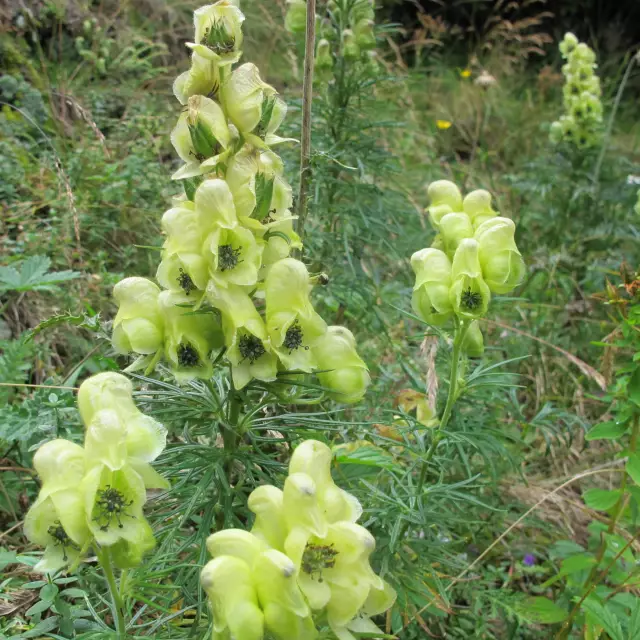 The species grows in the mountains, the plant is from 30 to 40 cm in height. The species is native to the Caucasus, the Pyrenees, and the Alps. The shoots of the plant grow straight with large flowers of sulfur-yellow color. Neutral and slightly fertile soil is the habitat of this species. On fertile soil reaches 90 cm in height. Flowering time - July.
The species grows in the mountains, the plant is from 30 to 40 cm in height. The species is native to the Caucasus, the Pyrenees, and the Alps. The shoots of the plant grow straight with large flowers of sulfur-yellow color. Neutral and slightly fertile soil is the habitat of this species. On fertile soil reaches 90 cm in height. Flowering time - July.
Aconite Carmichel (Aconite carmichaelii)
The homeland of the plant is the Far East and China. The plant looks beautiful, contains thick stems up to 2 meters and large flowers. Flowering time - August-September, favorite open sunny places. The plant grows with blue flowers.
Curly aconite (Aconite volubile)
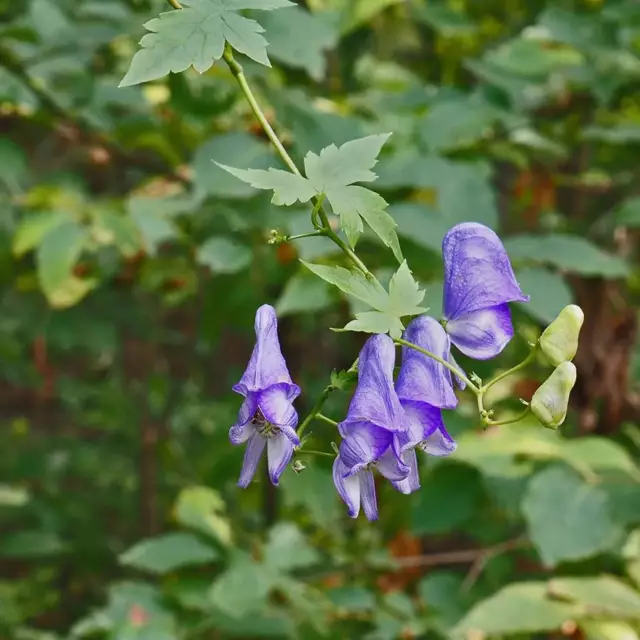 This species is native to Korea, Siberia. It has flexible stems of more than two meters, which wrap around the supports. The plant contains patterned leaves, dark purple flowers are formed in loose brushes that hang down. There are plants with white flowers that grow in partial shade.
This species is native to Korea, Siberia. It has flexible stems of more than two meters, which wrap around the supports. The plant contains patterned leaves, dark purple flowers are formed in loose brushes that hang down. There are plants with white flowers that grow in partial shade.
Bearded aconite (Aconite barbatum)
The species contains an unthickened root system, the stems reach about one meter in height and even more. The plant blooms with yellow flowers.
Aconite Dzungarian (Aconite soongaricum)
This species is the most poisonous only during certain vegetative periods. Spring stems are considered the most dangerous for people. Preference is given to fertile soils on mountain slopes in Kazakhstan, Mongolia, Russia.
Shoots reach a length of about 70 cm. Inflorescences in the form of a brush are formed at the top of the shoots. The flowers are long up to 4 cm in diameter of about 1.8 cm. The length of the inflorescences is from 8 to 10 cm - a good solution for creating a beautiful landscape design.
Aconite for outdoor cultivation
Aconite is a low-maintenance perennial plant. When planting, they prepare the soil with nutrients, further feeding should not be applied, while the plant needs watering when necessary.
Mature plants are not demanding for care, watering is necessary in dry weather, loosening the earth, removing weeds.
Dry inflorescences after flowering must be cut off - flowering will be more magnificent.
Young sprouts of bushes are more finicky in terms of care. In sunny and hot weather, you need to protect them from direct sunlight by covering them. You should also keep the humidity ground for young bushes. Plants tolerate frosty weather normally. It is recommended to cut the bushes near the ground itself and cover with a 15 cm layer of peat.
Rules for planting aconite
The plant is suitable for growing both in the sun and in partial shade. Fisher's aconite is a late bloomer, planted only in sunny places, because it will not be able to bloom before the onset of frost.
- The plant prefers fertile soils.
- The level of acidity does not affect growth.
- When groundwater is close, the plant is placed on elevated places.
Aconite transplant
Once every four years in autumn or spring, it is necessary to transplant plants a month before frost - for lush flowering and a neat appearance.
The planting hole should be larger than the root system of the plant. Settlement of compost, humus or mineral fertilizers from 15 to 20g per bush is a prerequisite for good growth. We use the propagation method of dividing the root system. The imperfection of this method is the transmission of diseases that the mother bush had. Loose and moderately moist soil is a must. The root neck should be buried in the ground about 2 cm.
Wrestler grooming rules
- When planting in the hot season, the plant should be shaded.
- We use a humate solution for irrigation, thus achieving a good survival rate in the first week after planting.
Aconite contains long inflorescences that need a garter.
Watering aconite
In dry conditions, adult plants are recommended to be watered twice a month. The plant does not tolerate excessive moisture - moderate watering is what is needed for a beautiful and healthy flower. Loosening the earth after watering is mandatory after a few hours, or mulching must be done. In autumn, we observe and do not allow stagnation of water in the soil.
Aconite breeding methods
It is possible to propagate the plant by dividing the bushes, seeds, cuttings.
By dividing the bush
Propagating by dividing the bushes, one shoot should be left on the tuber.
Climbing plants need to be propagated using seeds, and you can also use the method of dividing the bush. In this case, the aerial part is cut off at a distance of 30 cm from the ground.
The landing time of the wrestler is spring, autumn, summer.
Cuttings
Using the propagation method, cuttings can get rooting not one hundred percent.
Cuttings of plants are done in the period end of May - beginning of July.
It is necessary to cut cuttings from 10 to 15 cm and push into the soil, tilting slightly. Sand should be added to the soil, placing it with a top layer of 5 cm.
Cover with a cut bottle, closed with a lid.
With the help of seeds
Seeds are sown for the winter, March is the time for planting seedlings.
For seedlings, seeds should be kept in the refrigerator for about a month, then soak for 24 hours and sow.
Pests and diseases of aconite
With improper care for aconite or growing near trees, the plant may be susceptible to aphids, leaf nematodes. A dangerous disease for aconite is powdery mildew. When infected, it is necessary to remove the affected plants and treat other plants with a fungicide or insecticide.
Difficult moments when growing aconite
Late appearance of inflorescences or their absence - insufficient watering, improperly selected soil, no fertilizer, pest damage.
The flowering time is later - cold summer, or such is the peculiarity of the species.
With proper care, aconite will delight you with beautiful flowering. Good luck growing!




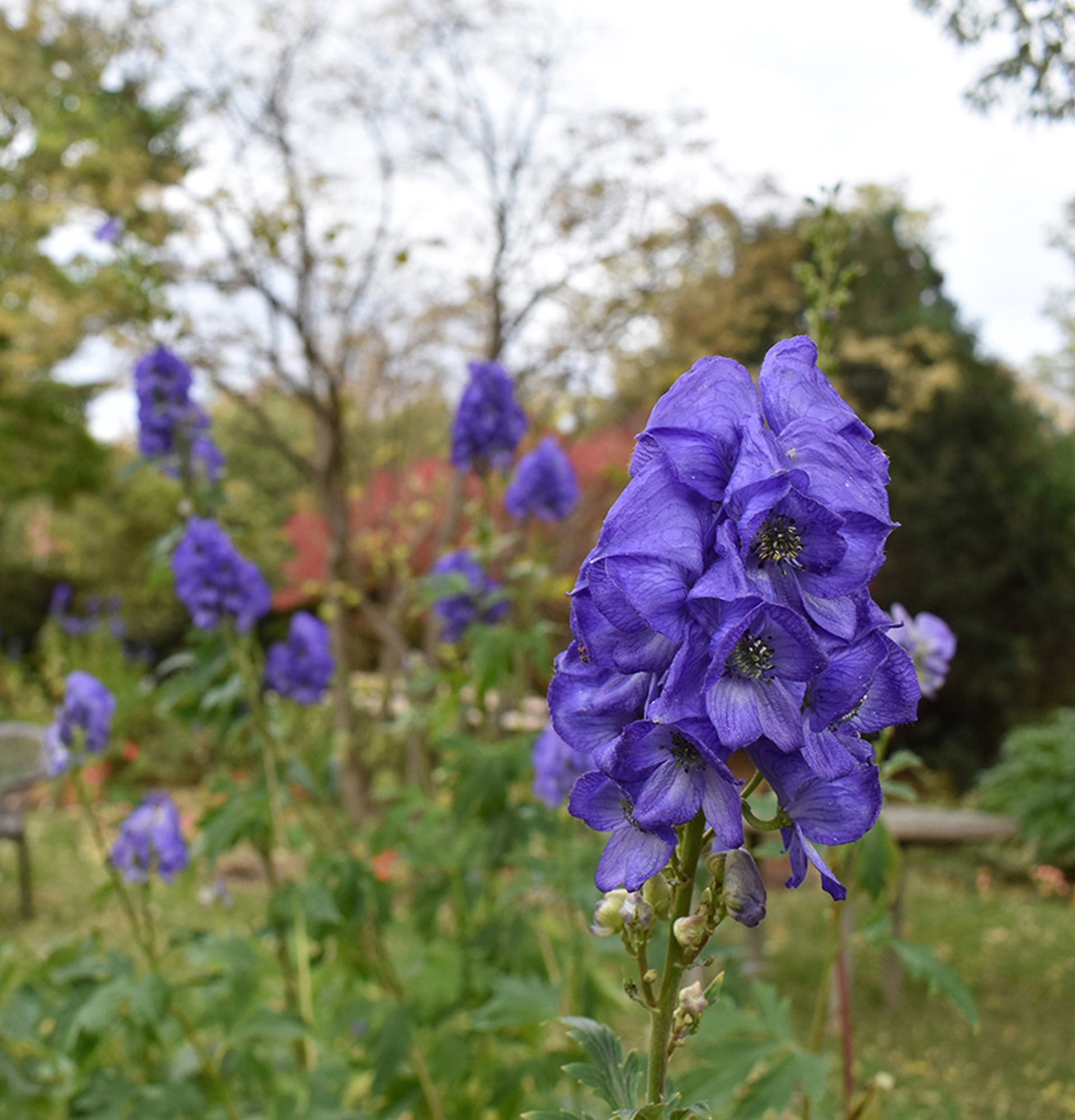










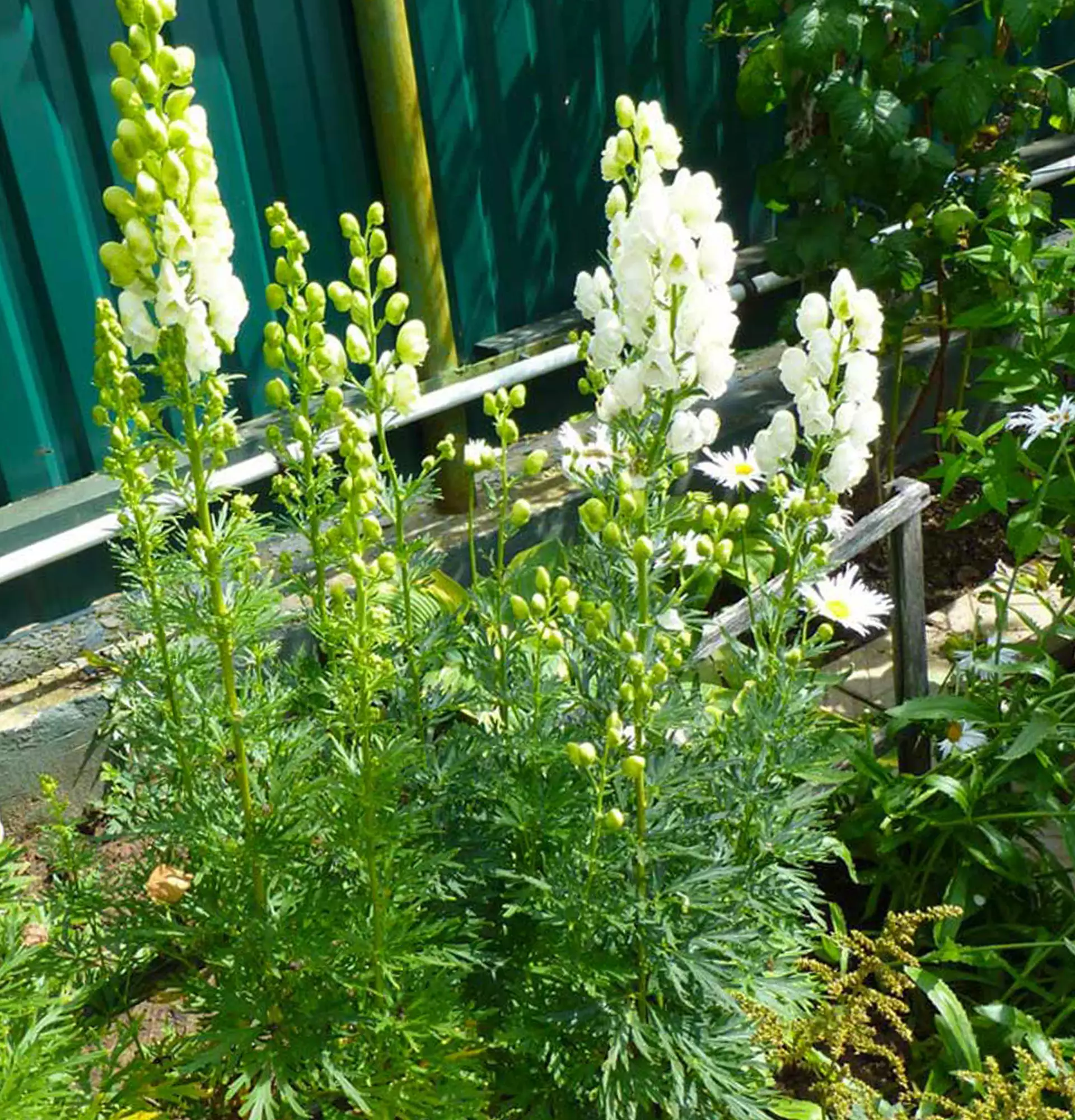
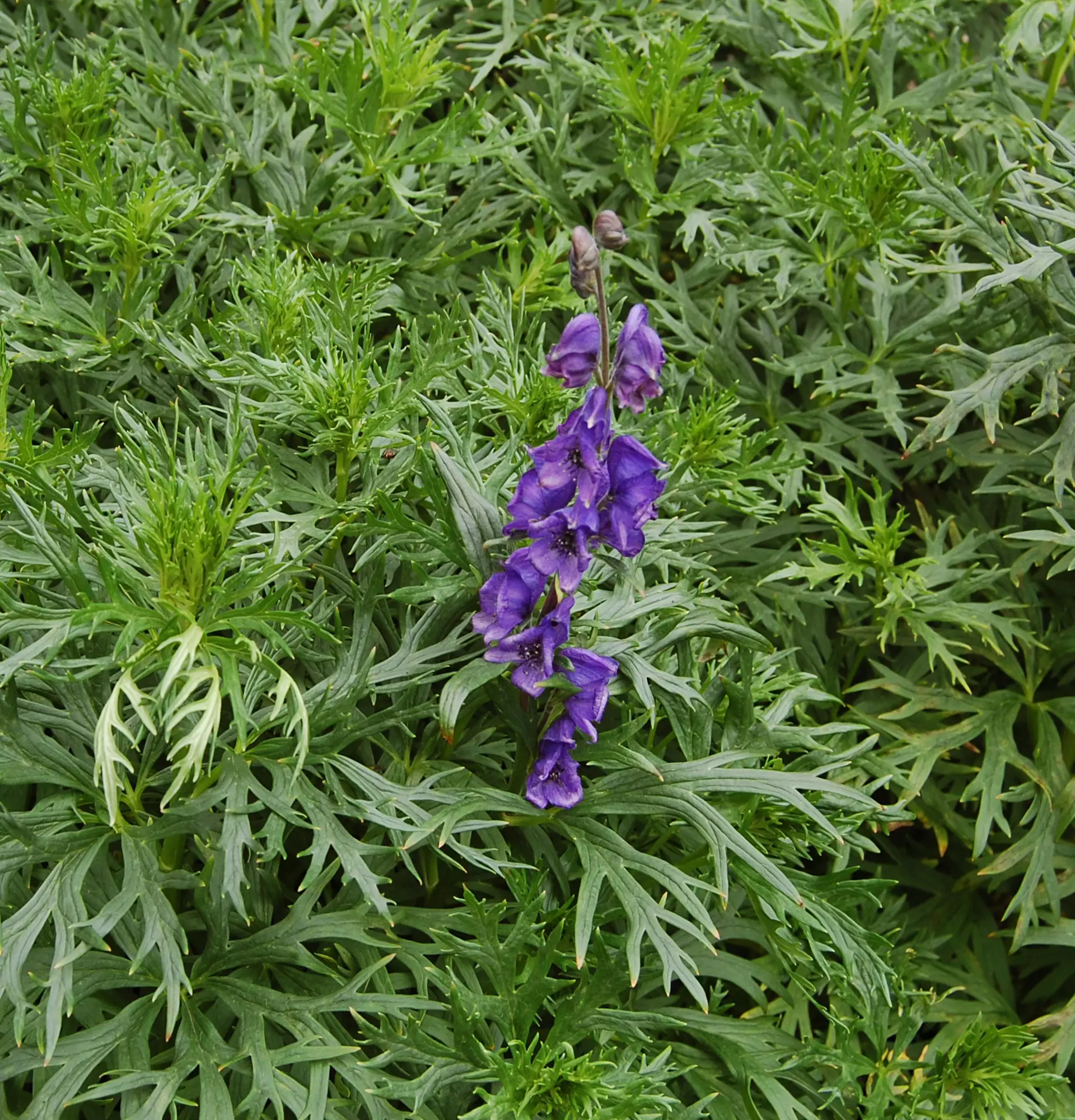
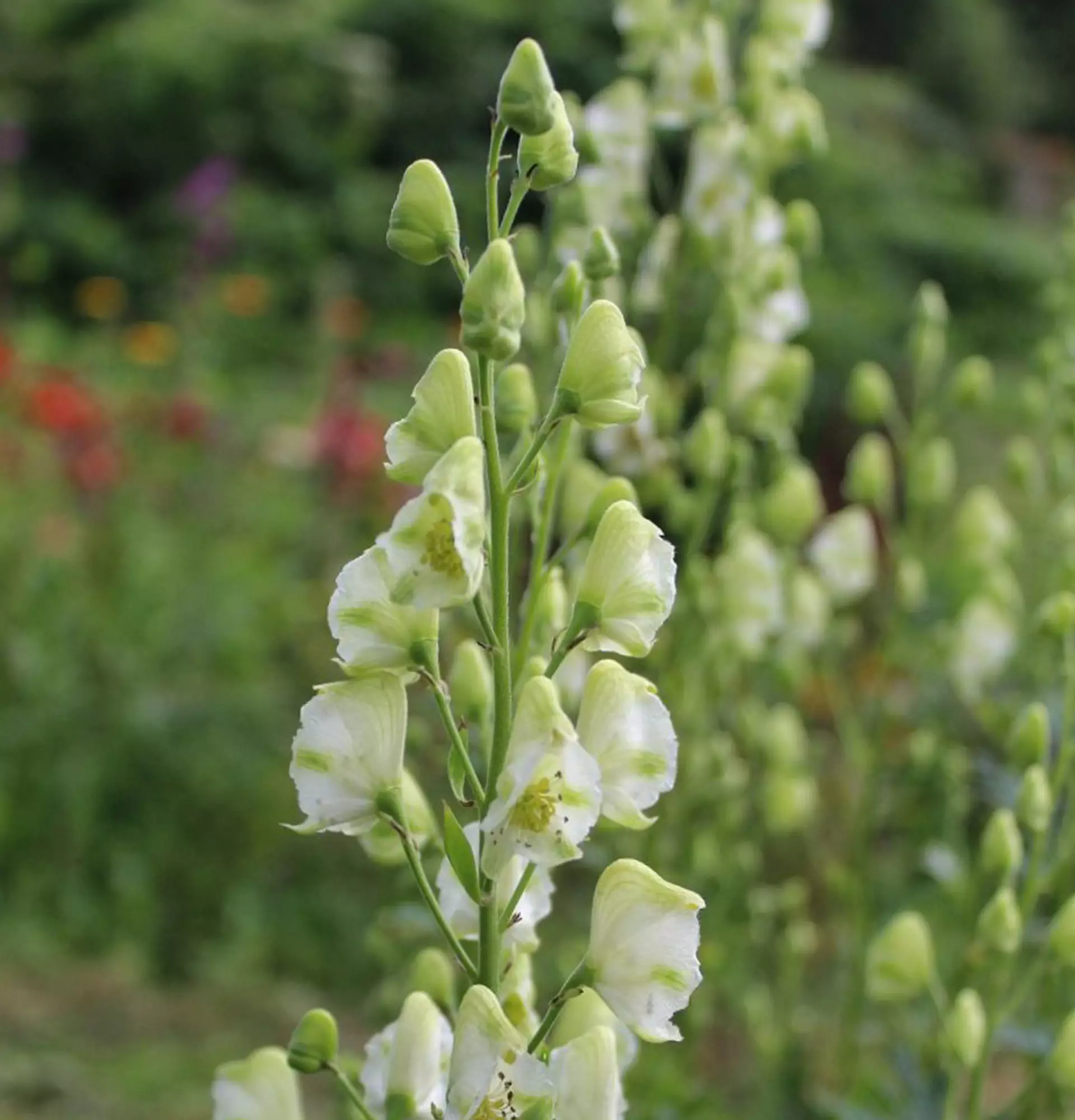
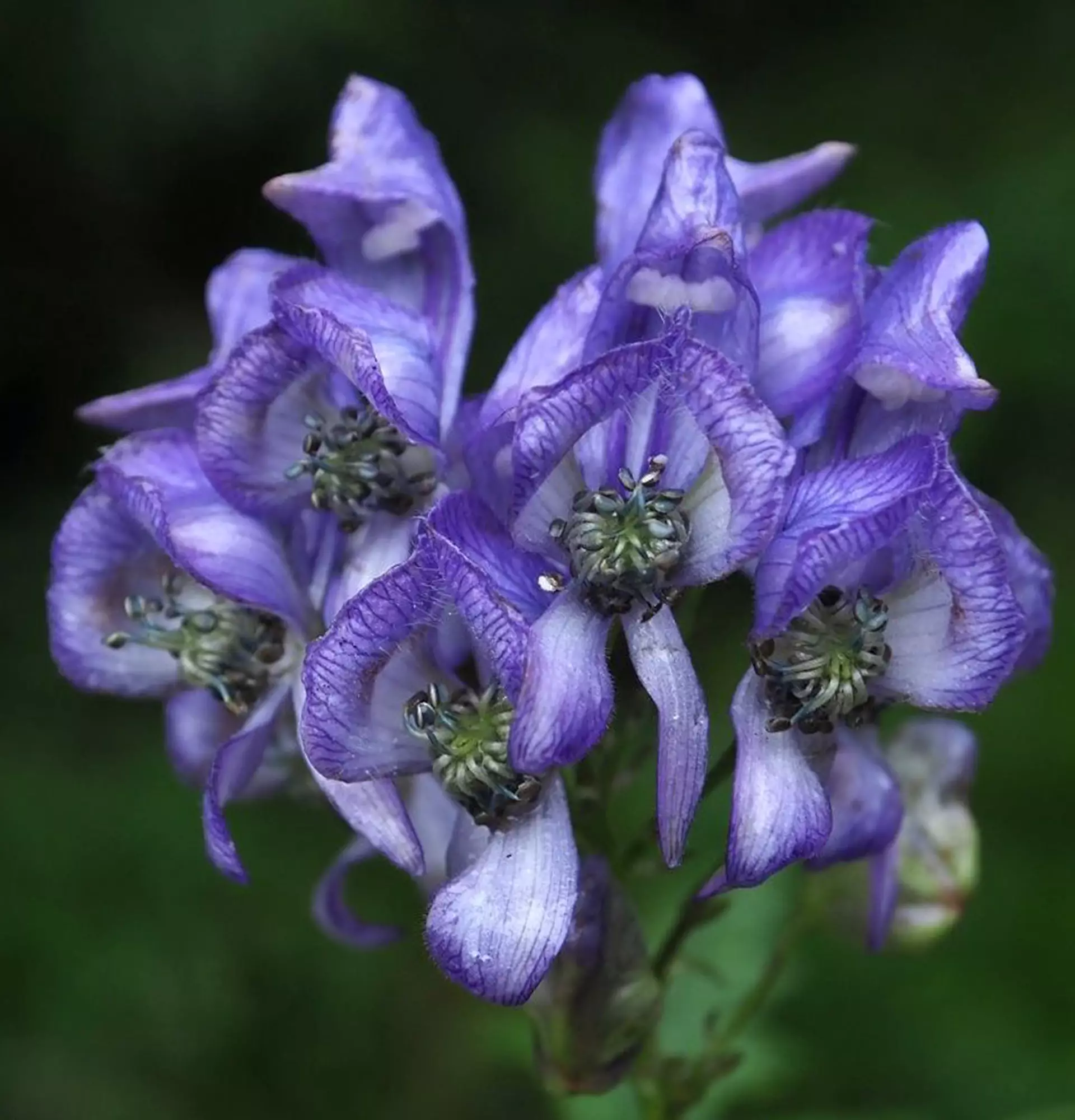
Write comments
Comments